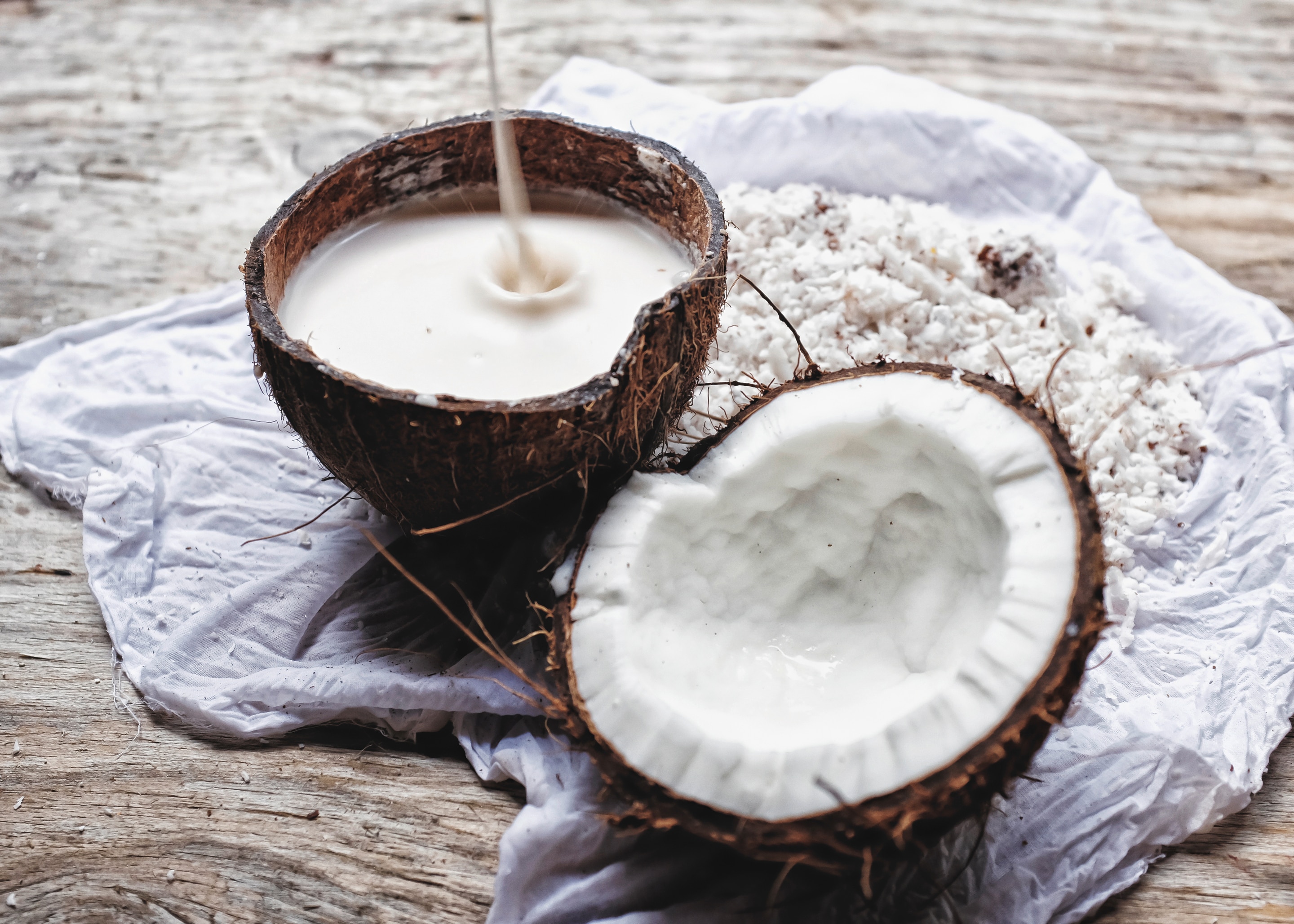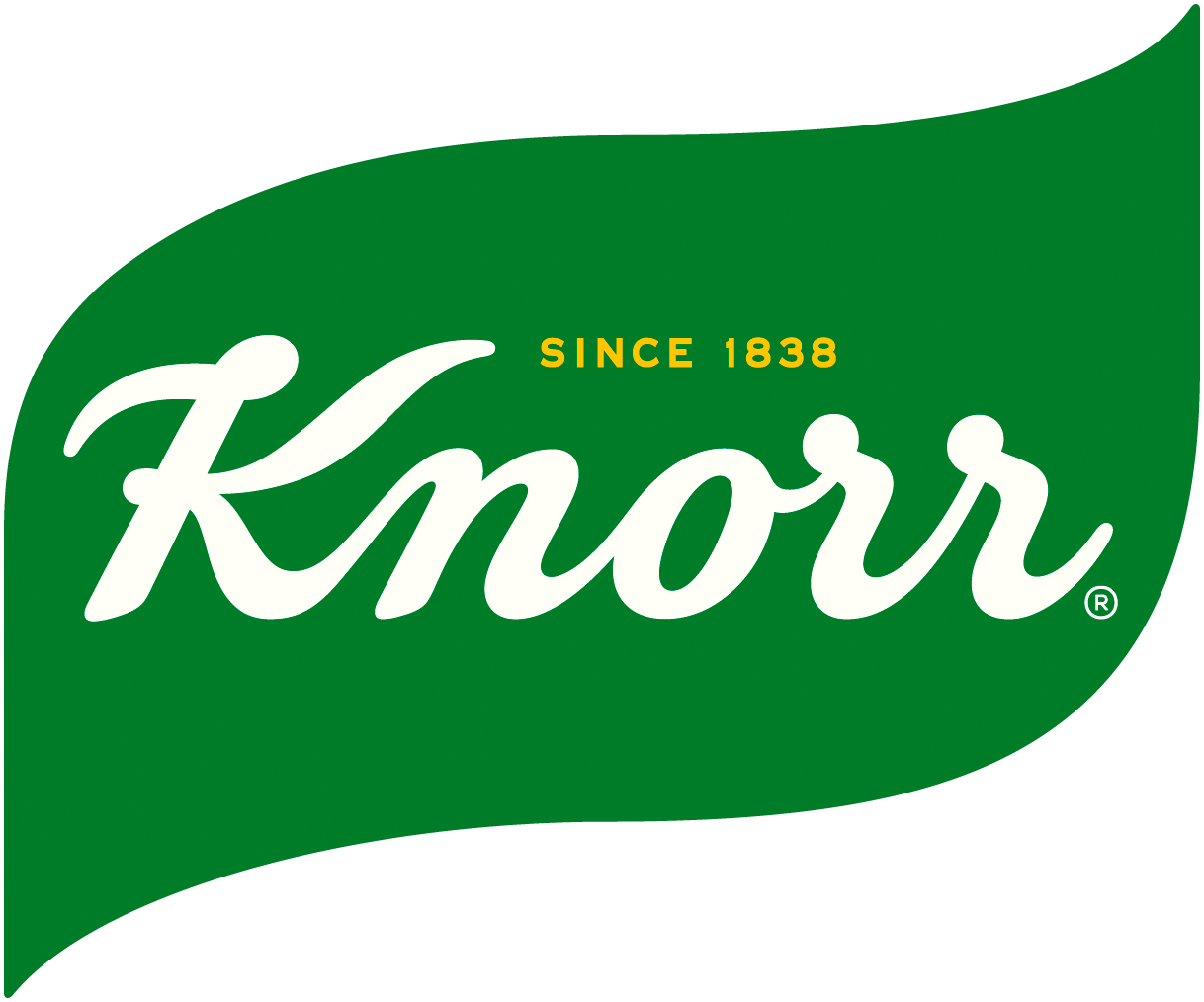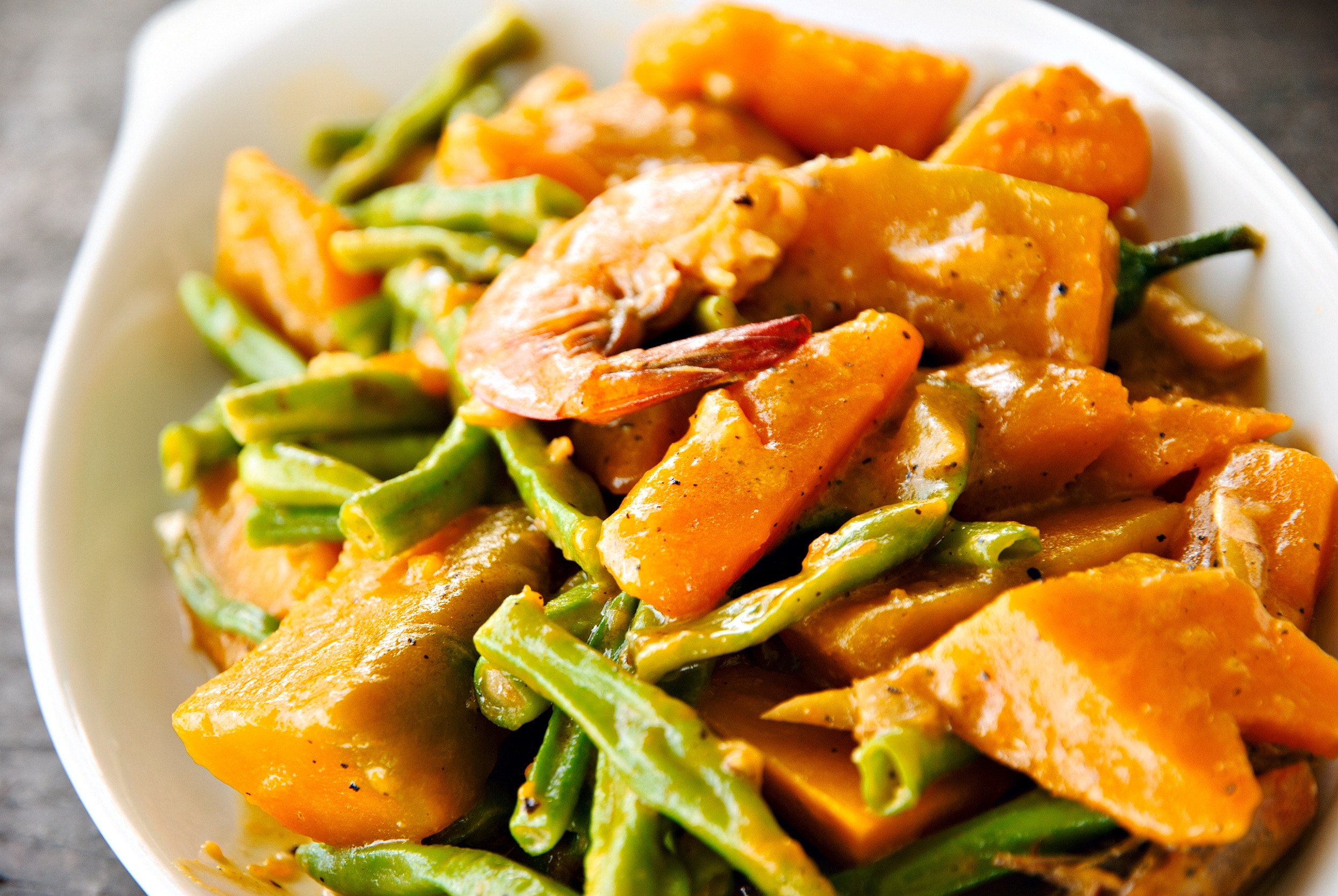Skip to:
Ginataang gulay can be eaten on its own or paired with fried tilapia
Coconut trees can be found in many coastal and tropical locations, which is why in the Philippines, the tree and its fruit are in abundance. And unlike other trees, every part of the coconut palm plant has a purpose. But of all its uses, the most recognizable is the fruit’s many edible applications. Aside from the juice and flesh, coconut milk has found its place in many recipes across the globe.
Incredibly versatile, creamy coconut liquids can be used to elevate the flavors of both savory and sweet fare. But like many ingredients, interchanging the milk for cream or vice versa in a recipe may prove disastrous, especially if you do not know the difference between the two. If you plan on preparing a tasty stew, soup, or dessert recipe, here are a few basics to help you out.
Coconut Milk vs. Coconut Cream: Know the Difference

Nothing beats freshly pressed coconut milk!
Gata is the general term lots of Pinoys use when referring to either coconut milk or cream. While the terminology is okay during everyday conversation, it can get confusing when you are trying to figure out if your tita means coconut milk or cream when she talks about her famous Maja Blanca recipe. So, which is which?
Coconut milk (gata)
Gata refers to milk from coconut meat. Pressing the grated meat of a mature coconut with water creates milk or cream. Telling one apart from the other is fairly simple. Any extraction that produces a thin consistency (often during the 2nd, 3rd, 4th, etc. press) is just gata. The outcome of the squeezing is a thinner extract with higher water content.
Coconut cream (kakang gata)
On the other hand, cream or kakang gata comes from the first extraction. Whenever you “milk” a coconut, the thick, rich liquid that first comes out is coconut cream. Compared to the second extraction, coconut cream contains a higher fat content.
When to Use Gata and Kakang Gata
LIke any other type of milk product, coconut cream and milk will depend on the recipe and the intended outcome of a particular dish.
Typically, you use milk to help tenderize or soften vegetables or meat. A perfect example of its tenderizing prowess can be seen in its use to brine chicken (buttermilk chicken, to be exact). Whenever it is used in dishes, it appears in the initial cooking process. Think of gata as the richer, flavor-infused version of water.
On the other hand, the cream from coconut is added towards the end of the cooking procedure. Like cream derived from dairy, kakang gata is best added to turn any viand or dessert into one with a texture that is creamier and so much tastier. If you are looking to create an authentic coconut-based meal, it will help to scour the recipe to know which type of coconut liquid to use. Bear in mind that baking is less forgiving, so it would be best to stick to the ingredient list before attempting to make substitutions.
Important Storage Tips to Follow
It surprises a lot of people to learn that milk from coconuts, like its dairy counterpart, can go bad when mishandled or stored improperly. To avoid causing food poisoning, it is always good to know how to keep your coconut liquids.
Storing fresh gata
Fresh gata MUST be consumed immediately. As a rule of thumb, if you don’t plan on using coconut milk just yet, refrain from pressing the liquid out from the grated meat.
Coconut milk powder
At the moment, no powdered coconut cream product exists in the market. Instead, you can find the dehydrated milk version. These recipe lifesavers are often packaged for single use. Some are pre-seasoned for savory food items, like the Knorr Ginataang Gulay Recipe Mix. Others are left without added flavors, making it the go-to choice for dessert recipes.
Store any unused powder in an airtight container. Most manufacturers recommend that you keep it refrigerated. This type of coconut product tends to last the longest.
Canned coconut cream
Unopened, a can of this type of cream can be stored in your kitchen pantry for months. Just make sure to use it before its best used by date. Keep the cans clean, rust-free, and dent-free to avoid contamination. Before opening, shake to incorporate any oils and fat that separate during storage.
Coconuts can be eaten raw or cooked. Either way, it is filled with vitamins, nutrients, and powerful antioxidants. In the past, if a recipe called for coconut milk or cream, it must be made first by squeezing the liquid from the fruit’s grated meat. The extract’s consistency will dictate whether the results will turn into milk or cream.
Nowadays, gata can be purchased from groceries and neighborhood sari-sari stores. Available in powdered form or ready-for-use canned versions, such innovations allow home cooks and even the pros to make coconut-based dishes with ease. Make the most sulit dishes with Knorr Ginataang Gulay mix. With Knorr you can bring a new dimension to an otherwise classic dish like Adobo, Kaldereta, or give Tsokolate de Batirol that comforting Champorado flavor. Introduce the rich coconut milk to dishes that even your kids will love.

